Geography, Culture 3-6, 6-12

As we are re-visiting countries and flags of Europe from primary level, we are starting the study of the biomes of Europe. Today, I’m sharing a fully detailed presentation of Waseca Biomes incredible geography and culture Montessori-aligned materials.
Direct link to Waseca Biomes give you $15 off on your purchase when you provide an email address.
I am presenting all the materials seen on the shelf. We will first explore the Europe map, which can be used with 5 year old+. Then, I want to share a comparison between the Biomes Readers vs. Biomes Cards Primary, and Biomes Cards Primary vs. Biomes Cards Elementary.
Europe Biomes Map
My 7 and 9 year olds are always happy to work with Waseca materials. The reading components can be a challenge for a new reader, but easy for an experienced reader.


Regardless of age, children approach the Biomes Maps knowing they will be successful, effortlessly. It’s just that the material offers the perfect tactile and visual method to memorize geographical features. We sort the cards first, by river, by mountains, by desert (Africa!), or by seas/lakes. Then we place the features while pronouncing the names (my job, or Google’s job, if uncertain). When we feel confident, we test our knowledge using the arrows (see pictures below).


Later, when the children have received a presentation or two, they are excited to use the Command cards (see below picture). The cards come in 3 color-coded groups. Each group of cards offers a different level of challenge. Therefore, level 1 is easy and accessible for all, while level 3 could be less obvious, and more geared towards older learners.
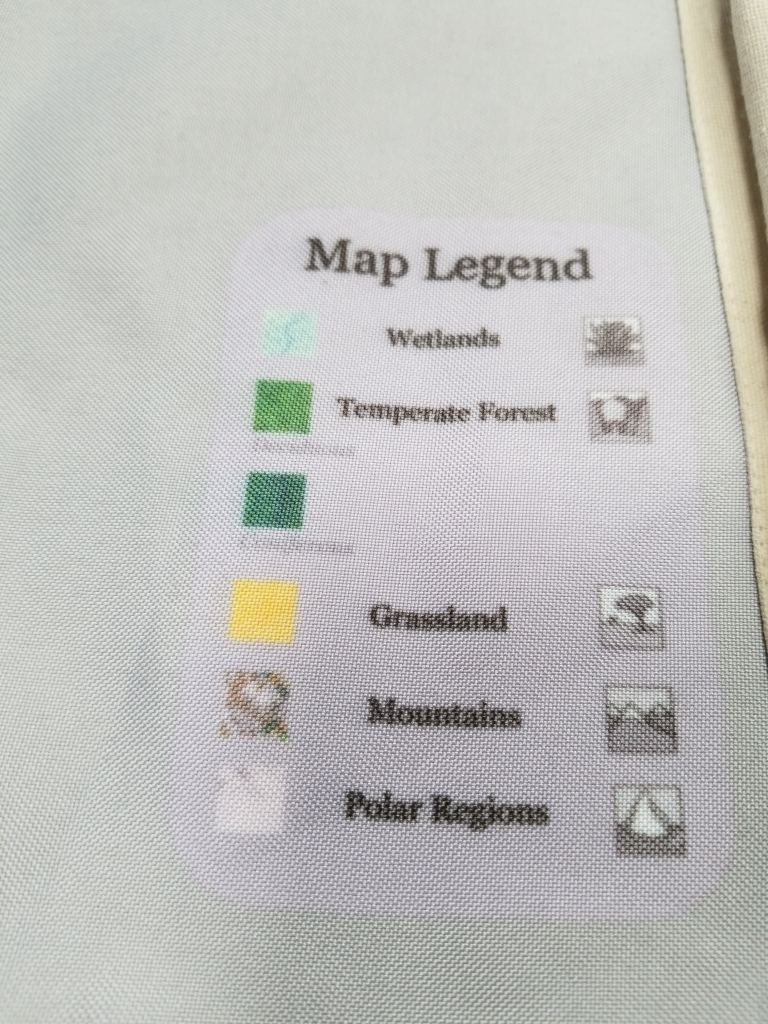
Legend on map 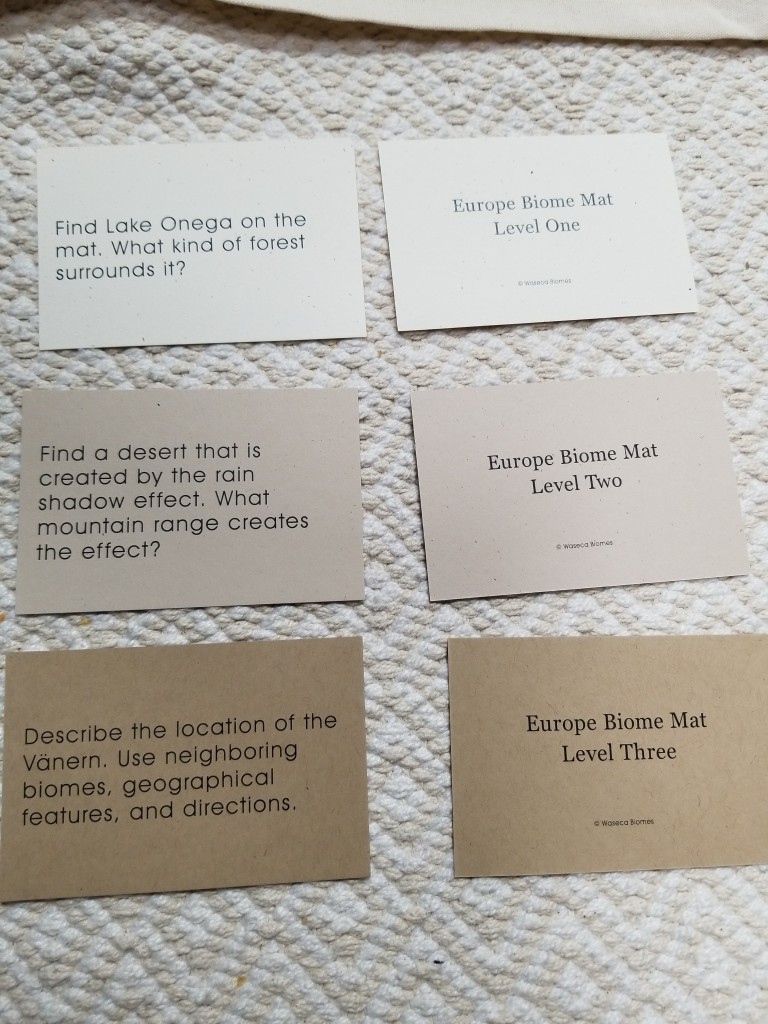
Command cards
3 levels
What is amazing with Waseca Biomes is that they use the same symbols and colors throughout all their readings, writing, cultural, and geographical materials. For example, Europe has a red theme because children in primary Montessori classrooms learn each continent using different colors. Waseca Biomes applied this method for their biomes as well. They use specific colors for each type of biome. Therefore, when you look at a map, or a Waseca globe, you can have a global understanding of how the biomes are laid out without even “reading.” How cool is that?!



Biomes Reader of Europe, Primary
Along with the Biomes Map, children of primary age can enjoy learning mostly about different animals of the biomes using the Biomes Readers set. It is adequate for emerging readers.

There are 9 portfolios; red being the easiest to read, gold being the most challenging one. Each portfolio contains 6 pictures, 6 descriptions (stories), and 1 booklet.

Ideally, the children read the small booklet first, which has no pictures to avoid distraction. Then they are to lay the 6 pictures from left to right, which are labeled 1-6 on the back. Finally, they read the description-story cards and match them. They can control their work by flipping the cards and compare the numbers on the back. It’s worth mentioning this work is currently on sale. 💫


Europe Biomes Map cards, Primary
The Biomes Map cards are a lovely complementary work that can go along with studying the biomes. Waseca Biomes offers other works, not shown, such a a wooden puzzle of the biomes for each continent, as well as a fun stencil maps making work.


The Biomes Map cards for primary level need to be understood. They are different than the elementary ones, because the reading level is more accessible to the primary level. There’s also an emphasis on vertebrate animals, which appeal to younger learners on the first plane of development.

Each biome comes in 3 parts: one large card being the control of error, the smaller ones containing a description and label. One card serves as control for error (see picture below).

There are 5 biomes described for Europe: Temperate Forests, Mountains, Wetlands, Grasslands, and Polar Region. You will see 3 icons on the back of each card, which represent: 1. the continent, 2. the biome, 3. the component represented (reptile, people, inset, plant…).

A child can study each biome and a few components of its unique fauna and flora. They may choose to focus on one particular animal, plant, or person, and write about it in their Companion Journal. Of course, the children love it, because they get to pick an illustration from the Master copy, color it, and glue it in the journal. Then, they can use the 3 part cards to write about a component of their choice.

I encourage my younger learner to do copy work to remove writing frustration. As for my older learner, external research and paraphrasing is encouraged.
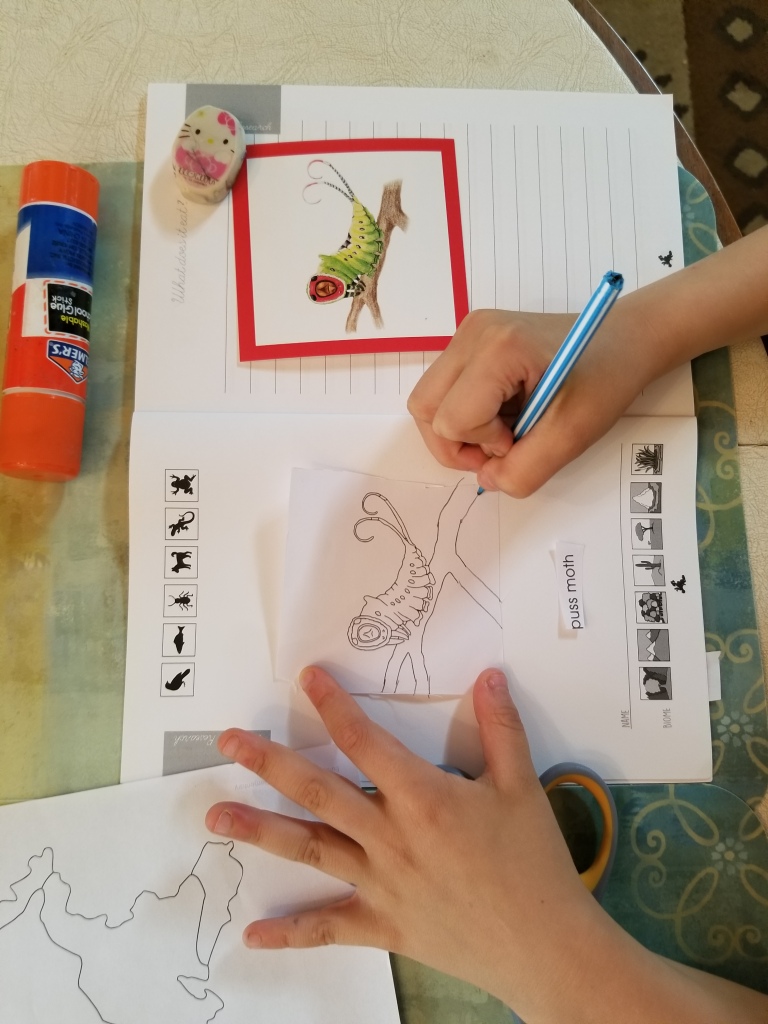
Children can also color a map showing the biomes. The map legend is a nice map making tool that the children will experience multiple times. They become expert at it!


Europe Biomes Map cards, Elementary
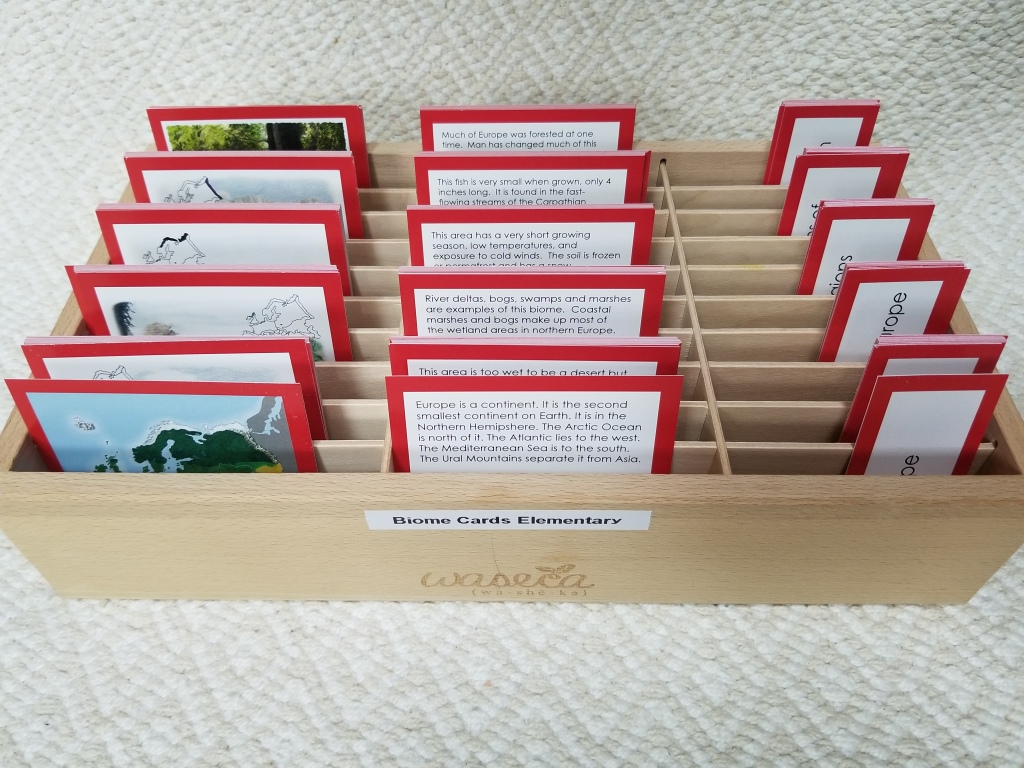
The Biomes Map cards for elementary is designed in the same fashion as the primary level, except that they contain much more specific information and cultural components. The text is in the front of the card, which means the children have to match text to picture, then label to the text (see picture below).


The control for error is different from the primary level. The cards contain icons on the back that should match. A child can study either every component of one biome, or, one component from every biome. For example, a child might choose to focus on studying all fishes from different biomes.

Each biome offers 13 components on animals, plants, or culture (people). I used a compartmentalized tray to sort our cards, but Waseca Biomes does have a drawer furniture to store the cards. You might find your own creative way to make it appealing for your learners.
In conclusion, Waseca Biomes materials for studying continents provide opportunities for reading, writing, learning about geography, biology and culture. The organization of the material supports children inner need for order as well, and help help them classify knowledge.

I hope you too are excited about this material. Feel free to drop a question in the comments if I missed something! Thank you for reading.
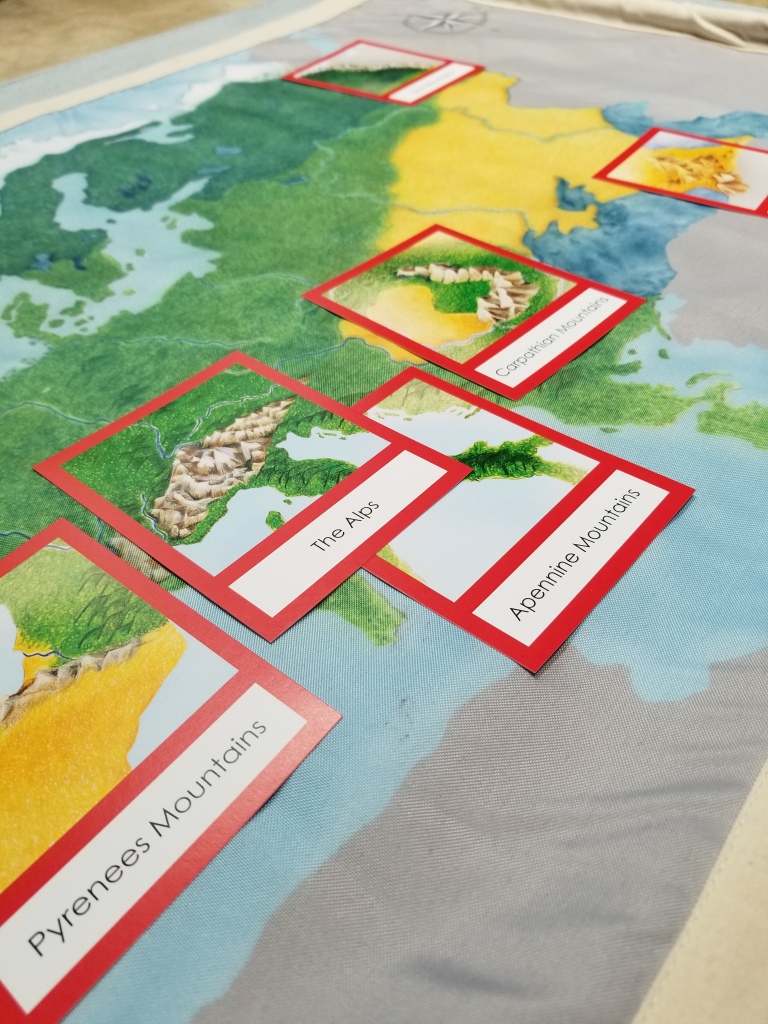
Ready for a lesson?
Where do you get your journals? Do you make them or buy them?
LikeLike
They are sold by Waseca, very inexpensive, maybe $5. There’s one for each continent.
LikeLike
Is it possible to find a French version of this material?
LikeLike
Wouldn’t it be nice?! Unfortunately they don’t offer them in other languages. You may be able to purchase a set, type a translation, and laminate it over. Le vocabulaire n’est pas difficile.
LikeLike
Hi Leila, where did you get your multi compartment tray? I love the compact version but don’t see it on their site? Thanks!
LikeLike
Hello Annie! Just for other readers, the tray is not for sale anymore. They replaced it with the rainbow folders in a wooden box. It’s aesthetic, kids-friendly, and easier for storage.
LikeLike